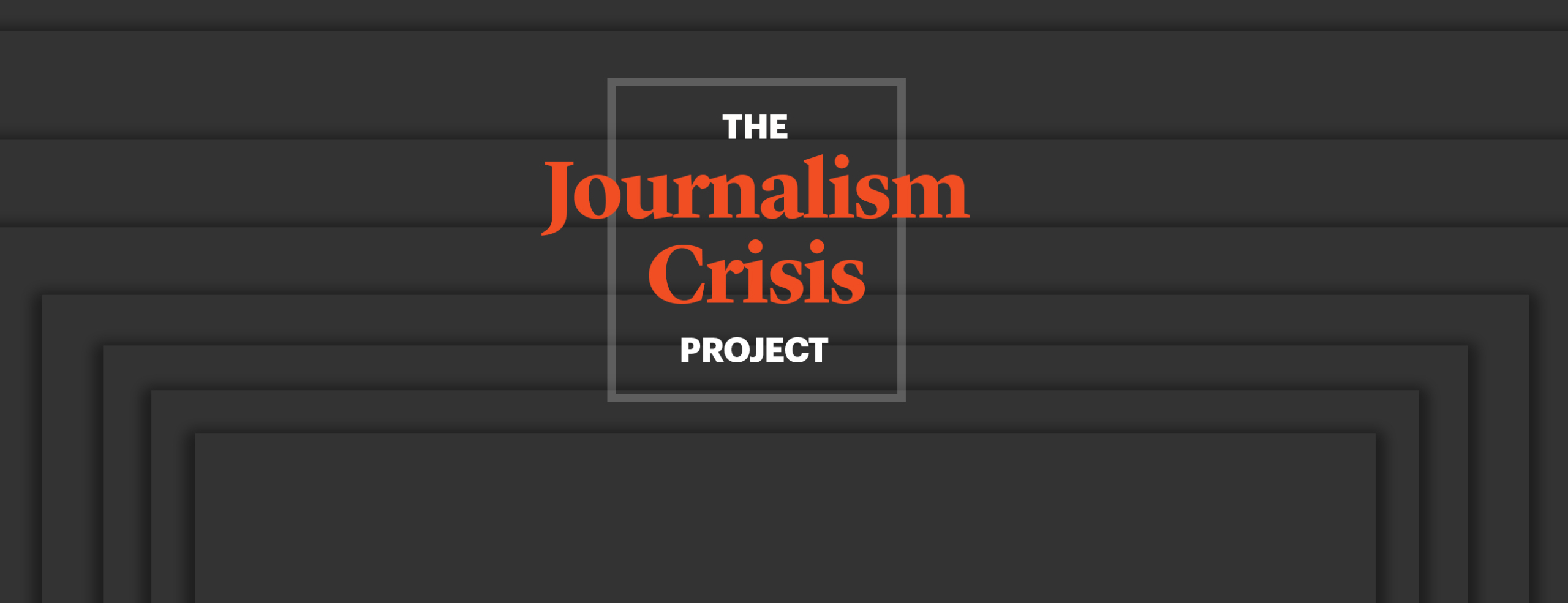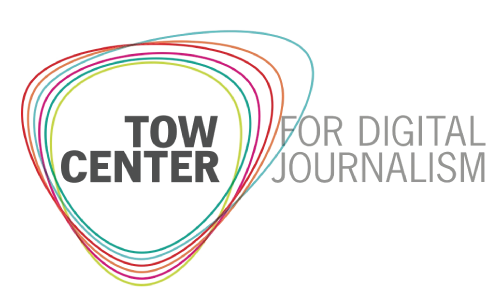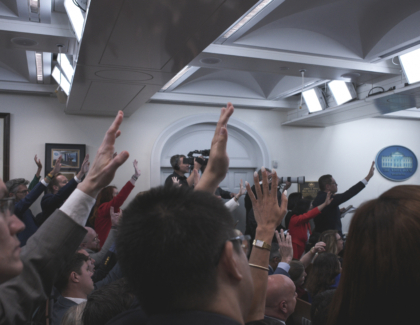Sign up for the daily CJR newsletter.
Two years ago, Helen Branswell wrote for STAT that “When Towns Lose Their Newspapers, Disease Detectives are Left Flying Blind.” Epidemiologists depend on regional outlets in monitoring outbreaks, Branswell explained, and in 2018, they were concerned about increasing threats to an important resource. Two years after the publication of Branswell’s article, even more towns have lost their newspapers, and the onslaught of a worldwide pandemic casts the essential role of disease surveillance into hyper-focused relief. Here’s the irony: our society is better positioned to recognize the value of monitoring local journalism for viral warning signs—but the local news ecosystem is more beleaguered than ever. The current pandemic’s effects on local media could make it even harder for us to detect the next infectious disease outbreak.
Many disease-monitoring resources around the world rely on data from local newsrooms. HealthMap is one such resource, an epidemiological web-crawling tool that monitors emerging infectious diseases across the globe, providing data to healthcare workers, students, researchers, epidemiologists, and governments. “Local news is an important source for us,” says Autumn Gertz, HealthMap’s program coordinator.
As local newsrooms shrink amid a pandemic, the ironic and troubling implications for disease surveillance are difficult to quantify, but easy to observe. David Scales, a clinician and professor of medicine who was a research fellow at HealthMap from 2010 to 2013, explains the role local news can play in tracking disease, noting that shoe-leather reporting is a tool for gathering public health data just as it is a journalistic mechanism; it can provide clues for epidemiologists to interpret. “Journalists don’t necessarily have to connect the dots,” Scales says. “If a journalist in, say, Fall River, Massachusetts is saying, We’ve had a couple of people end up in the hospital because of food poisoning, and then a reporter says that in Providence, Rhode Island, and then another in Newport, Rhode Island—all of a sudden, someone sitting at the State Department of Health in Rhode Island is asking, Why do we have a sudden spike in food poisoning?” In 2011, Scales and colleagues studied how decreased news coverage can lead to gaps in disease surveillance, demonstrating a correlation between diminished reporting resources—because of attention to other major outbreaks, for example, or coverage reductions on holidays—and decreased disease alerts. Though the small drop that the researchers measured didn’t upset the system, it raises questions about how large a drop the system can sustain.
ProMED—one of the largest resources reporting infectious disease outbreaks in the world, now familiar for its frequent citations in national reporting on COVID-19—also depends on journalism. “Media reports are one of our best and earliest sources of outbreak information,” says Larry Madoff, Editor at ProMED.
Though it’s difficult to quantify the effect of declining local news coverage on our capacity to monitor infectious disease, it’s clear that local information is best positioned to prevent outbreaks. “A pandemic starts at the local level,” Madoff says. “The closer you can get to identifying a cluster and outbreak at its origin, the better. The further you get from the local, the bigger an outbreak needs to be before it gets noticed or picked up and the more likely it is to spread.”
The implications of local news decline can be both immediate and enduring. When Maia Majumder, a computational epidemiologist, saw CJR’s news desert map back in 2018, she warned Helen Branswell of “a disaster for infectious disease surveillance.” After working with HealthMap for four years, Majumder went on to a post-doctoral research fellowship, then a full-time research and teaching position. Today, her epidemiological work focuses more on the long-term: her team is studying the influence of media on emerging infectious diseases. Over the past months, Majumder’s team has faced setbacks corresponding to the disappearance of local news archives and entire newsrooms. “Sometimes, when you try to click on the link that you saved a couple of months ago, it doesn’t exist,” Majumder says. “This creates a lot of problems for historical analysis and longitudinal studies.”
The pandemic begets a troubling cycle: a worldwide disease outbreak has hurt local newsrooms—the same local newsrooms that will provide an important line of defense in predicting, preventing, and understanding the next outbreak. As regional news outlets weaken and dwindle, so does that first line of epidemiological defense, and we’re caught in an increasingly murky feedback loop that leaves us more aware of the system’s limitations—but less prepared to address them.
The Journalism Crisis Project aims to train our focus on the present crisis, tallying lost jobs and outlets and fostering a conversation about what comes next. We hope you’ll join us (click to subscribe).
EXPLORE THE TOW CENTER’S COVID-19 CUTBACK TRACKER: Over the past six months, researchers at the Tow Center have collected reports of a wide range of cutbacks amid the pandemic. Now there’s an interactive map and searchable database. You can find it here.
CONTRIBUTE TO OUR DATABASE: If you’re aware of a newsroom experiencing layoffs, cutbacks, furloughs, print reductions, or any fundamental change as a result of covid-19, let us know by submitting information here. (Personal information will be kept secure by the Tow Center and will not be shared.)
Below, more on recent changes in newsrooms across the world:
- POLL SHOWS LOW LEVELS OF TRUST: A new Gallup poll found that six in ten survey respondents reported little to no trust in the “mass media” to report the news “fully, accurately, and fairly.” This low level of trust “has been persistently low for over a decade and shows no signs of improving, as Republicans’ and Democrats’ trust moves in opposite directions,” Gallup reports.
- THE FEDERAL GOVERNMENT CAN HELP: For Poynter, Steve Waldman wrote about a recent proposal for government intervention on behalf of local news outlets, one he believes will allow publications to preserve editorial independence. The plan, an initiative of the Rebuild Local News coalition, proposes a refundable tax credit for news subscriptions and donations, the re-establishment and integration of private newspapers into non-profit organizations, changes to antitrust laws, and a variety of other strategies to incentivize sustainable financial support and to deter exploitation. Despite his belief in the project, Waldman writes, “solving the local news crisis will require much more than enacting these proposals. Foundations and individual donors will need to significantly increase their support, and the commercial sector will need to continue to innovate.”
- GOOGLE WANTS YOUR ADMIRATION: For NiemanLab, Josh Benton wrote about Google’s billion dollars in financial support for local news, arguing that such donations are in the tech company’s own best interest when it comes to building good will with the public. “When a corporate announcement like this seems to make no sense at all from a straight profit-and-loss perspective, it’s probably about meeting a deeper need somewhere else — in this case, Google’s need to be beloved enough to remain underregulated,” Benton writes.
- TECH PLATFORMS COULD BE UTILITIES: For CJR’s daily newsletter, Mathew Ingram asked whether Facebook and Google could be considered “democratic utilities.” Through conversations on CJR’s Galley discussion platform, Ingram talked to Dipayan Ghosh and Joshua Simons about their recent paper advocating regulation of the tech giants’ algorithmic infrastructure. The two compare Facebook and Google’s power to that of old oil and railroad “trusts,” contending two things: that Facebook can be considered a monopoly and that it has caused social harm. Tech platforms ought to be considered utilities, Gosh told Ingram, and they ought to be regulated as such.
- SUPREME COURT TO RULE ON LOCAL MEDIA REGULATION: Last Friday, the Supreme Court agreed to hear a case about relaxing media ownership regulation at the local level, Deadline reported. At present, regulations don’t allow cross ownership of local newspapers and television stations or local radio and television stations. “The FCC has argued that the ubiquity of the Internet makes that rule unnecessary. But a lower court ruled that the FCC hadn’t taken into consideration the impact of its rule changes on minority and female ownership,” Jill Goldsmith writes.
- NEWSLETTERS GO LOCAL: Axios is on track to be profitable in 2020, the Wall Street Journal reported, and it has plans to launch Facebook-sponsored local newsletters, beginning with newsletters in Minneapolis-St. Paul, Denver, Tampa, and Des Moines. For the NewStart Alliance newsletter, Jim Iovino asked whether local journalists could make a living off the newsletter model. And at the Reynolds Journalism Institute, Pete Pachal wonders when newsletters might hit a breaking point, writing “After all, no market rises forever, and all trends come and go.” (Elsewhere, Bello Collective wrote about local outlets using podcasts to build connections with readers).
- IPAD INITIATIVE KEEPS SUBSCRIBERS ENGAGED: Two years after the Arkansas Democrat-Gazette replaced subscriber newspapers with iPads in its transition to digital subscriptions, Northwestern’s Medill Local News Initiative assessed the initiative’s success. Though the paper lost some subscribers in its initial shift from print to digital, researchers at the Medill Spiegel Research Center say that the Democrat-Gazette’s monthly churn rate is lower than any of the twenty outlets the center has examined over the past few years. Though a few subscribers noted that they missed the feel of a print paper, the publication’s successful transition demonstrates the importance of communicating value to readers.
- NATIONAL ORGS BEEF UP NEWSROOMS FOR ELECTION COVERAGE: Two initiatives, Votebeat and Election SOS Fellowship, are working to place more local reporters in under-resourced newsrooms to cover the election, NiemanLab reported last week.
- BRIGHT SPOTS: Conde Nast has reversed pay cuts implemented in May, WWD reported. The Cumberland Westmorland Herald, a 160-year-old local outlet in the UK, is profitable again after a near closure six months ago, PressGazette reported. And two local digital startups have hit promising targets in fundraising and subscriptions, Poynter found.
- UNIONS CONTINUE TO FIGHT: Staffers at WAMU, Washington DC’s NPR station, have unionized, the Washingtonian reported last week. This announcement followed Elizabeth Warren and Alexandria Ocasio-Cortez deciding to pull out from the New Yorker festival in solidarity with the New Yorker union. And on Monday, the New Yorker union reached an agreement with Condé Nast, ending at-will employment for staffers and ensuring the provision of just cause for termination.
- MORE FURLOUGHS, CLOSURES: Essence magazine furloughed staff as a result of the pandemic, The Daily Beast reported. And CNN has shuttered its storytelling division, Great Big Story.
JOURNALISM JOBS AND OPPORTUNITIES: MediaGazer has been maintaining a list of media companies that are currently hiring. You can find it here. The Deez Links newsletter, in partnership with Study Hall, offers media classifieds for both job seekers and job providers. The Ida B. Wells Society announced that its micro-loan program for journalists would no longer require recipients to repay their loans—you can apply here and donate here. The Successful Pitches database offers resources for freelancers. The International Journalists Network lists international job opportunities alongside opportunities for funding and further education. And The Lenfest Institute has begun the Lenfest News Philanthropy Network, which offers training and support for news publishers of many sizes and business models.
NOTE: A previous version of this newsletter cited Helen Branswell’s piece in Scientific American. The piece was originally published in STAT, then later licensed by Scientific American for use.
Has America ever needed a media defender more than now? Help us by joining CJR today.









